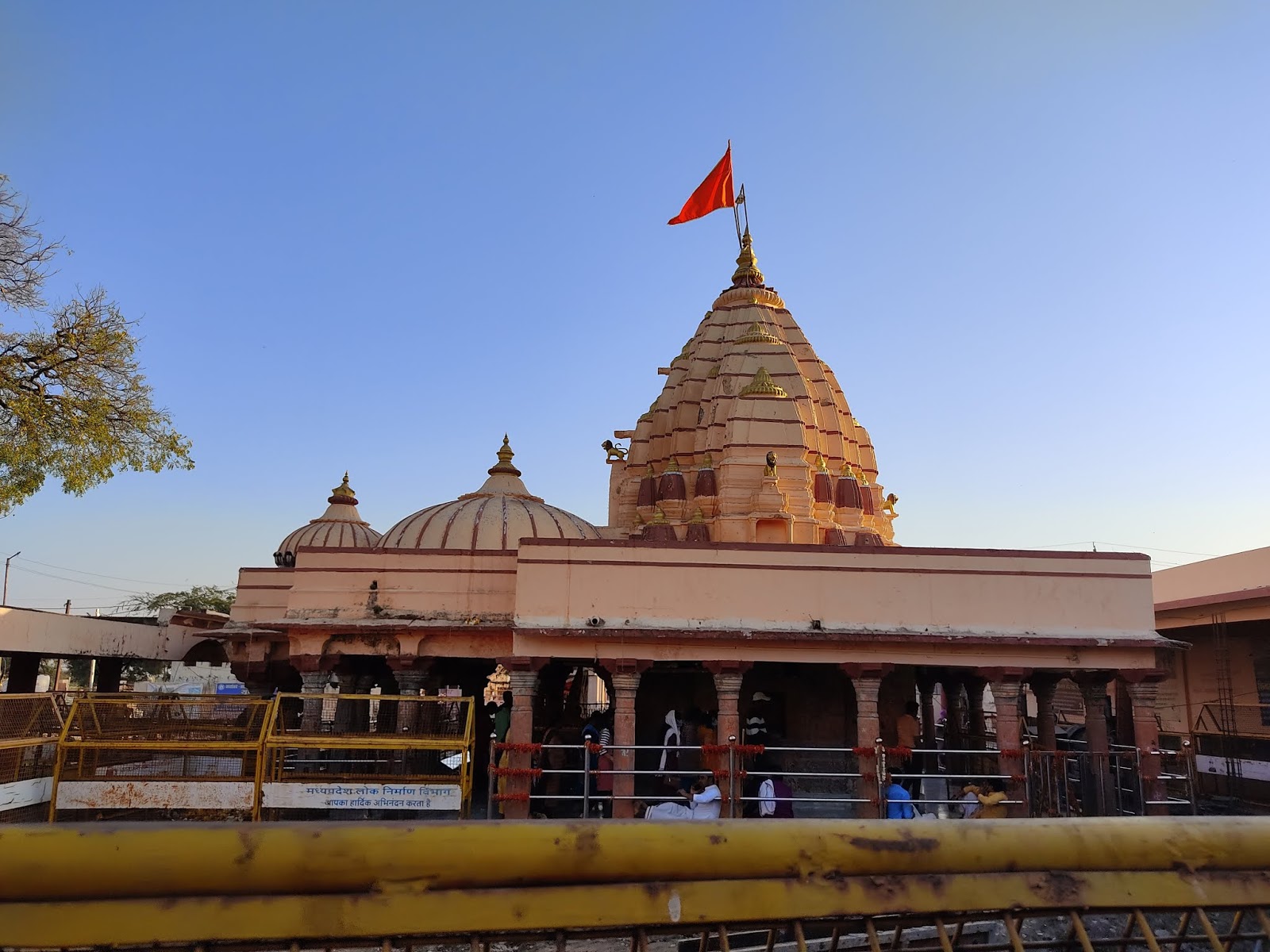
Chintaman Ganesh, also known as Chintaman Vinayak or the God who relieves worries, is one of the most revered and oldest Ganesh temples in India. Located in the city of Ujjain, Madhya Pradesh, this landmark holds great significance in Hindu mythology and attracts thousands of devotees every year.
In this article, we will delve into the fascinating world of Chintaman Ganesh and uncover 11 interesting facts about this revered landmark. From its ancient origins to its unique rituals and architectural marvels, we will explore the many facets that make Chintaman Ganesh a must-visit destination for spiritual seekers and history enthusiasts alike.
So, get ready to embark on a virtual journey to Chintaman Ganesh as we uncover the intriguing stories and legends surrounding this divine abode of Lord Ganesh.
Key Takeaways:
- Chintaman Ganesh is an ancient Hindu temple in Ujjain, India, known for its unique self-manifested idol and powerful blessings that bring good luck and prosperity to devotees.
- The temple’s serene location by the Shipra River, grand festival celebrations, and historical significance make it a must-visit for those seeking spiritual upliftment and architectural marvels.
Ancient Roots
Chintaman Ganesh, also known as Chintamani Vinayak, is a famous Hindu temple dedicated to Lord Ganesha. It is located in the city of Ujjain in the Indian state of Madhya Pradesh. This ancient temple holds great religious and historical significance, dating back centuries.
Unique Idol
The main idol of Chintaman Ganesh is believed to be swayambhu, meaning it is self-manifested. It is carved out of a single black stone and is adorned with precious jewels and ornaments. The idol depicts Lord Ganesha in a sitting posture with his consort Riddhi and Siddhi.
Powerful Blessings
Devotees believe that worshipping Chintaman Ganesh brings good luck, prosperity, and removes all obstacles from their lives. It is said that Lord Ganesha, being the remover of obstacles, grants the wishes of his devotees who pray with pure intentions.
Mahakaleshwar Connection
Chintaman Ganesh temple is closely associated with the nearby Mahakaleshwar Jyotirlinga temple, one of the twelve sacred Jyotirlingas of Lord Shiva. Devotees often visit both temples as part of their pilgrimage to seek blessings from Lord Ganesha and Lord Shiva.
Festival Celebrations
The temple witnesses a grand celebration during the festival of Ganesh Chaturthi, which falls in the Hindu month of Bhadrapada. Devotees from all over the country flock to Chintaman Ganesh temple to offer prayers and seek blessings during this auspicious period.
Serene Location
The Chintaman Ganesh temple is situated on the banks of the Shipra River, providing a serene and peaceful atmosphere for devotees. Visiting the temple and offering prayers while surrounded by the natural beauty of the river is a spiritually uplifting experience.
Mythological Significance
According to Hindu mythology, it is believed that Lord Ganesha emerged in Ujjain from the matted hairs of Lord Shiva’s wife, Goddess Parvati. The Chintaman Ganesh temple stands as a reminder of this divine incident and attracts devotees seeking solace and blessings.
Architectural Marvel
The temple showcases exquisite architectural craftsmanship, blending Rajput and Maratha styles. The intricate carvings, majestic pillars, and beautiful domes are a treat for art and architecture enthusiasts.
Chintamani Yantra
The sanctum sanctorum of Chintaman Ganesh temple houses a revered Yantra (a mystical diagram) known as the Chintamani Yantra. It is believed that meditating on this Yantra brings mental peace and helps in attaining spiritual growth.
Prasadam Offering
Devotees visiting Chintaman Ganesh temple can receive prasadam, a sacred offering blessed by Lord Ganesha. The prasadam usually includes Modak, a sweet dumpling considered to be Lord Ganesha’s favorite.
Historical Significance
Chintaman Ganesh temple has witnessed the rise and fall of various dynasties throughout history. It has been rebuilt and renovated several times by different rulers, leaving behind a rich historical legacy that adds to its charm.
Conclusion
Chintaman Ganesh is a truly fascinating landmark with a rich history and cultural significance. From its architectural beauty to its religious importance, there is no shortage of interesting facts about this iconic temple. Whether you are a devout worshiper or a curious traveler, visiting Chintaman Ganesh is an experience that will leave a lasting impression.
FAQs
1. What is Chintaman Ganesh?
Chintaman Ganesh is a renowned Hindu temple dedicated to Lord Ganesha, the god of wisdom, knowledge, and prosperity. It is located in the city of Ujjain in the state of Madhya Pradesh, India.
2. How old is Chintaman Ganesh?
The exact age of Chintaman Ganesh is uncertain, but it is believed to have been built during the reign of the Paramaras, a dynasty that ruled the region between the 9th and 13th centuries.
3. What is the significance of Chintaman Ganesh?
Chintaman Ganesh is considered to be one of the eight swayambhu (self-manifested) Ganesha temples in India. It is believed to fulfill the wishes of devotees and provide them with relief from worries and troubles, hence the name “Chintaman,” which means reliever of anxieties.
4. Is there a particular time to visit Chintaman Ganesh?
Chintaman Ganesh Temple remains open throughout the year, but the best time to visit is during the festival of Ganesh Chaturthi, which usually falls between August and September. The temple attracts a large number of devotees during this festive period.
5. Can non-Hindus visit Chintaman Ganesh?
Yes, Chintaman Ganesh welcomes visitors from all religions and backgrounds. It is a place of spiritual significance and offers a serene atmosphere where one can appreciate the beauty of the temple architecture and immerse themselves in the sacred ambiance.
6. Are there any rituals or ceremonies performed at Chintaman Ganesh?
Devotees can participate in various ritualistic practices such as offering flowers, sweets, and coconuts to Lord Ganesha. The temple also conducts special prayers and aarti (a religious ceremony involving light) in the mornings and evenings.
7. Can we take photographs inside the temple?
Photography is not allowed inside the main sanctum of Chintaman Ganesh temple. However, visitors are usually allowed to take photographs in the temple premises, capturing the magnificent architecture and the serene surroundings.
8. Is there any dress code to be followed while visiting Chintaman Ganesh?
There is no specific dress code, but it is advised to dress modestly and respectfully while visiting any religious place. It is also customary to remove footwear before entering the temple premises.
Chintaman Ganesh's fascinating history leaves visitors eager to explore more spiritual wonders. Discover the captivating beauty of Hindu temples like Eklingji, immerse yourself in Ujjain's rich cultural tapestry, or delve deeper into Ganesh's divine essence through illuminating facts. Each destination promises a unique journey of enlightenment and connection to India's ancient heritage.
Was this page helpful?
Our commitment to delivering trustworthy and engaging content is at the heart of what we do. Each fact on our site is contributed by real users like you, bringing a wealth of diverse insights and information. To ensure the highest standards of accuracy and reliability, our dedicated editors meticulously review each submission. This process guarantees that the facts we share are not only fascinating but also credible. Trust in our commitment to quality and authenticity as you explore and learn with us.


